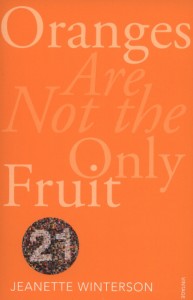“Art does not imitate life. Art anticipates life.”
So wrote Jeanette Winterson, a British writer known for her beautiful and unique novels that question how we look at history, sexuality, and even fiction itself.
Winterson’s first novel, Oranges Are Not the Only Fruit, was a fictionalized account of her childhood spent under the tyranny of a religious mother who burned her books and evicted her at age 16 for having “unnatural passions” towards women.
Since then she has been a champion for feminist and queer causes and is known for her attempts to break down gender roles. In Written on the Body, she constructed a love story, full of affairs with both sexes, in which the first-person narrator never reveals whether he or she is male or female.
However, the most striking aspect of Winterson’s work is the artful craft of her writing. Winterson believes that good writing, like all art, doesn’t merely describe the world around us. It creates a new and living world.
“The fiction, the poem, is not a version of the facts,” she wrote. “It is an entirely different way of seeing.”
And a new way of seeing forces us to confront our prejudices and our habits. She likens the action of art to a plant with a deep taproot growing amongst plants whose shallow fibre roots cannot penetrate far into the soil.
“Art puts down its roots into the deepest hiding place of our nature,” and in doing so “unlocks nutrients” that would otherwise lie outside the reach of our everyday experience, according to Winterson.
Winterson believes our relationship to art and literature should be a passionate love affair, allowing ourselves to be moved and moulded by what we read.
“Art is large,” she wrote, “and it enlarges you and me.” If you are looking for art to enlarge you, Winterson’s novels are a good place to start.
Jeanette Winterson must-read:
Oranges Are Not the Only Fruit
(Lansdowne library code: PR 6073 I615 07)

